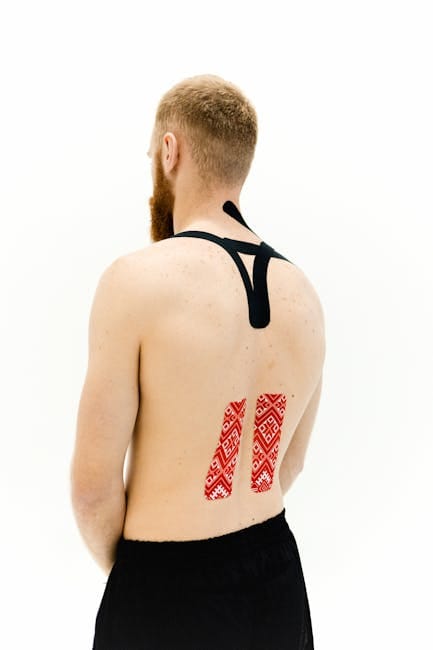The Most Common Causes of Back Pain in Athletes
Back pain is a common ailment that affects athletes across various sports and disciplines. Whether you’re a professional or a weekend warrior, understanding the root causes of back pain can help you prevent it and maintain peak performance. In this blog post, we delve into the most common causes of back pain in athletes, offering insights and tips to help you stay on top of your game. 🏃♂️💪
Table of Contents
1. Introduction
2. Muscle Strain and Overuse
3. Poor Posture and Technique
4. Herniated Discs
5. Spondylolysis and Spondylolisthesis
6. Inadequate Warm-Up and Stretching
7. Conclusion
8. FAQs
Introduction
Back pain can significantly impact an athlete’s performance and overall well-being. While some causes are inevitable due to the physical demands of sports, others can be managed or prevented with the right knowledge and practices. Let’s explore these causes in detail to help you understand and address back pain effectively.
Muscle Strain and Overuse
One of the most common causes of back pain in athletes is muscle strain or overuse. Repeated movements, especially those involving twisting, bending, or lifting, can lead to tiny tears in the muscle fibers. This often results in inflammation and soreness. Sports like tennis, golf, and weightlifting are notorious for causing muscle strain.
To prevent muscle strain, it’s crucial to incorporate strength training and conditioning exercises into your routine. Focus on building core strength, as a strong core supports the back and reduces the risk of injury. Remember, allowing adequate rest and recovery time between intense workouts is just as important to prevent overuse injuries.
Poor Posture and Technique
Bad posture and improper technique during training or competition can lead to significant back pain. When athletes fail to maintain the correct posture, it places undue stress on the spine and surrounding muscles. This is particularly common in sports that require repetitive motions, such as cycling and rowing.
Correcting posture and refining technique can alleviate this problem. Consider working with a coach or physical therapist to analyze your form and make necessary adjustments. In addition, practicing mindfulness during training sessions can help you remain aware of your body alignment and posture.
Herniated Discs
A herniated disc occurs when the soft inner gel of a spinal disc protrudes through its outer layer, often pressing on nearby nerves. This can cause sharp, shooting pain that radiates down the legs, a condition known as sciatica. Athletes in contact sports like football or rugby are particularly susceptible due to the high-impact nature of these activities.
Prevention and management of herniated discs involve maintaining flexibility and strength in the back muscles and ensuring proper lifting techniques. If you suspect a herniated disc, consult with a healthcare professional for appropriate diagnosis and treatment.
Spondylolysis and Spondylolisthesis
Spondylolysis is a stress fracture in one of the vertebrae, while spondylolisthesis occurs when a vertebra slips out of place. These conditions are common in sports that involve hyperextension of the spine, such as gymnastics and diving.
Athletes should be aware of the symptoms, including pain that worsens with activity and improves with rest. Early diagnosis and treatment are crucial to prevent further injury. Physical therapy, bracing, and in some cases, surgery, may be recommended based on the severity of the condition.
Inadequate Warm-Up and Stretching
Skipping warm-up and stretching routines is a quick path to injury. A proper warm-up increases blood flow to muscles, enhancing their flexibility and performance while reducing the risk of strains and sprains.
Develop a comprehensive warm-up routine that includes dynamic stretching and sport-specific movements. This not only prepares your body for the physical demands ahead but also enhances your mental focus and readiness.
Conclusion
Understanding the common causes of back pain in athletes is the first step toward prevention and management. By incorporating strength training, maintaining proper posture, and adhering to a regular warm-up routine, you can minimize the risk of back pain and enjoy a longer, healthier athletic career. Remember, listening to your body and seeking professional advice when needed are key components of effective injury prevention. 🏆
FAQs
Q1: How can athletes prevent back pain?
A: Athletes can prevent back pain by maintaining strong core muscles, using proper techniques, ensuring adequate rest, and performing regular warm-up and stretching exercises.
Q2: When should an athlete consult a doctor for back pain?
A: If back pain persists despite rest and home remedies, worsens over time, or is accompanied by symptoms like numbness or weakness in the limbs, it’s important to consult a healthcare professional.
Q3: Can back pain affect an athlete’s performance?
A: Yes, back pain can significantly impact an athlete’s performance by limiting mobility, strength, and endurance, leading to decreased performance and increased risk of further injury.
Q4: Are there specific sports that are more prone to causing back pain?
A: Sports such as gymnastics, weightlifting, tennis, and contact sports like football are more prone to causing back pain due to their intense and repetitive movements.
